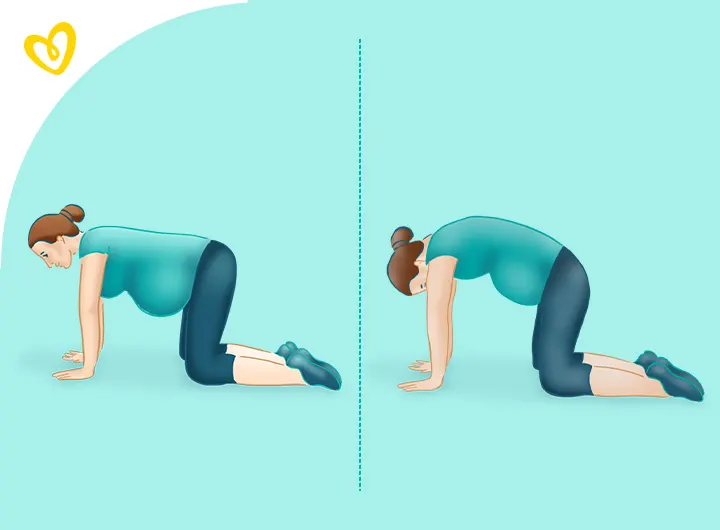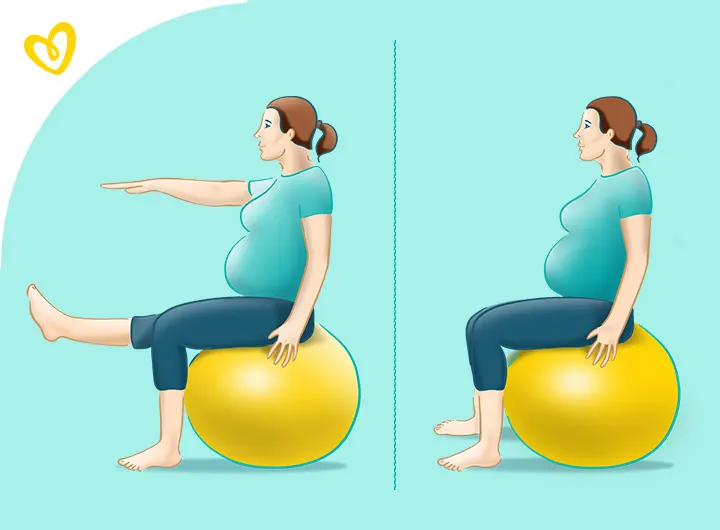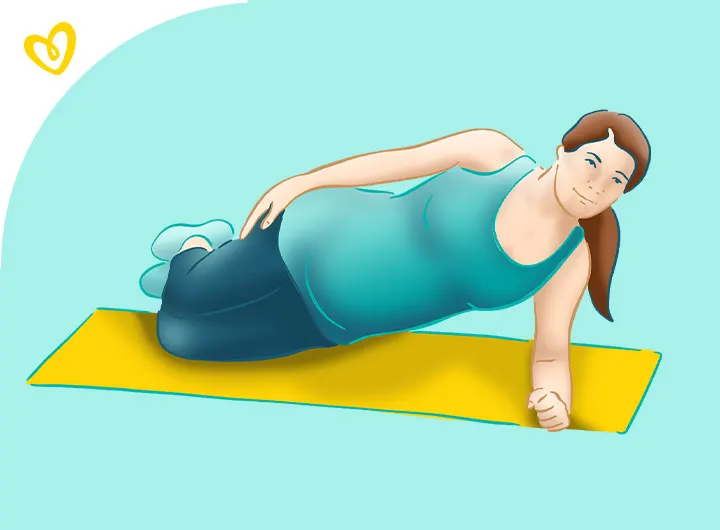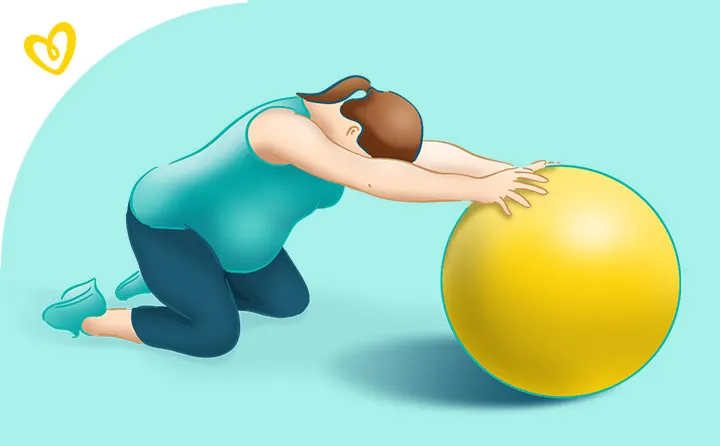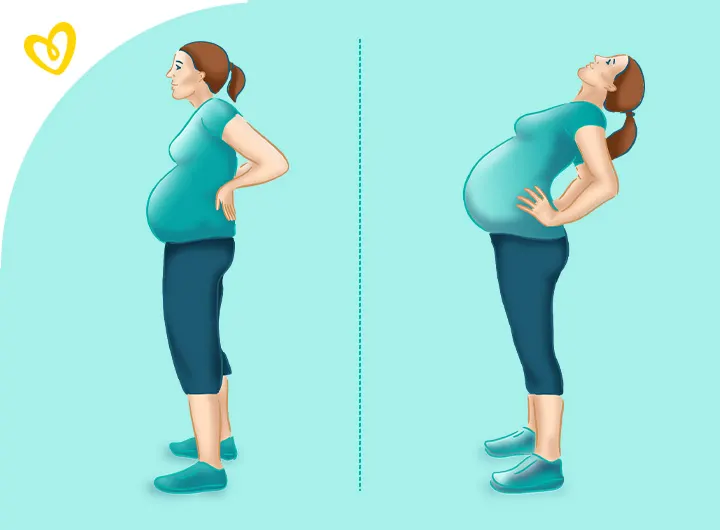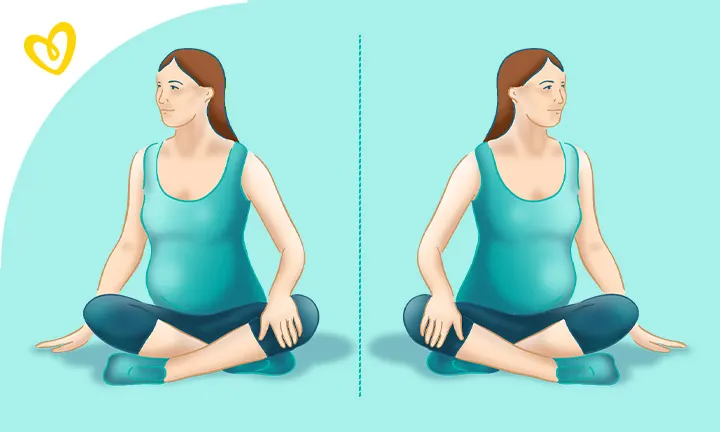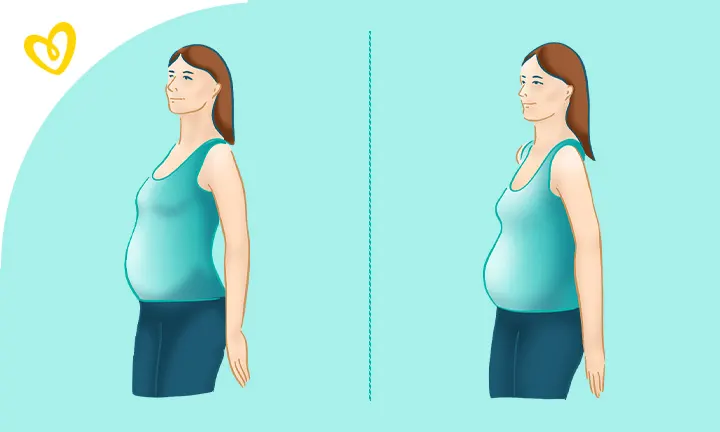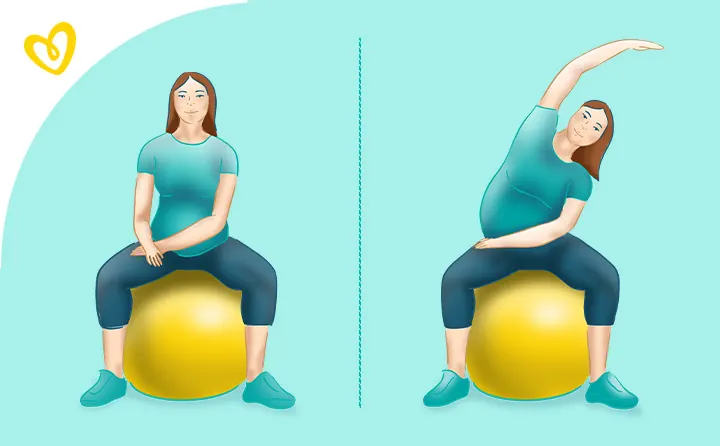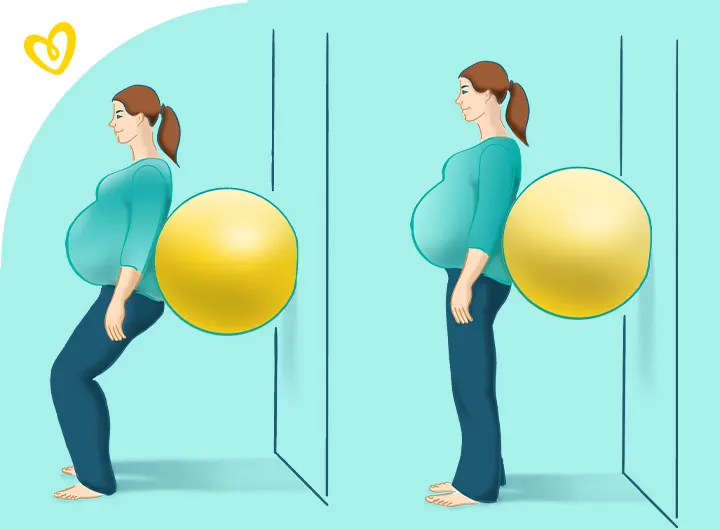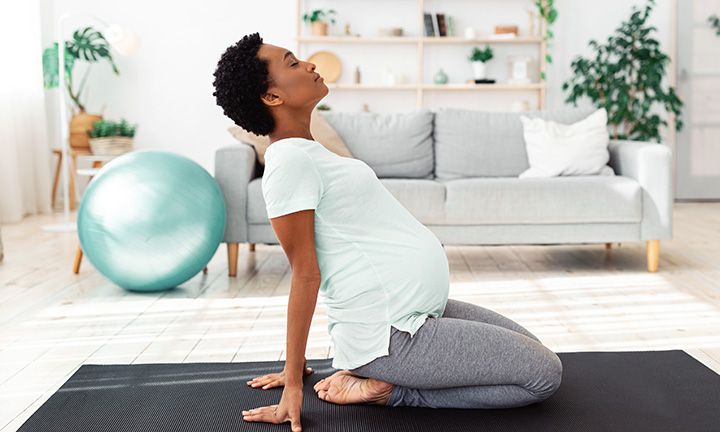
Safe and Simple Pregnancy Workouts and Exercises
Pregnancy is a wonderful experience, yet there’s no denying that it can be uncomfortable and even demanding on the body at times. Exercise during pregnancy may help relieve many typical discomforts associated with pregnancy, enhance the well-being of both you and your baby, and boost your mood and energy! So, whether you’re seeking simple methods of integrating exercise into early pregnancy, you want workouts to ease certain discomforts, or you wish to learn about exercises to avoid during pregnancy, explore our advice and tips, including some pregnancy-safe stretches and exercises you can include in your fitness routine.
Benefits of Exercise During Pregnancy
Exercise in general can do a lot of good for your pregnant body. Besides strengthening your heart and lungs and improving overall fitness, exercise during pregnancy can help reduce common discomforts, tone and prepare your muscles for labour, boost your energy levels, help you sleep better and help increase blood flow. Engaging in pregnancy exercise is beneficial for both your physical and mental well-being. It’s important to choose safe exercises during pregnancy to ensure the health and safety of both you and your baby. Regular exercise in pregnancy can be a vital part of your antenatal care, so consider incorporating pregnancy exercise workouts into your routine. Remember, exercise when pregnant should always be done with caution, and it's wise to consult with your midwife or doctor before starting any new pregnancy workout routine. During your pregnancy, try to incorporate about 30 minutes of moderate-intensity aerobic exercise, five days a week. But if you’re starting off, even 10 minutes of exercise at a time can make a difference. This could be brisk walking, gardening or dancing! Whatever activity elevates your heart rate and strengthens key muscles will help you get those benefits of exercise during pregnancy. Aim for about 150 minutes of exercise per week. Naturally, any amount of exercise during pregnancy is beneficial, so it’s OK if you don’t reach 150 minutes each week. Either way, any time spent moving your body will help you obtain the following benefits during pregnancy.
Decreasing Discomfort
When pregnant, you may experience some symptoms or conditions that are uncomfortable, such as digestive issues, body aches, muscle pain, swollen feet and hands and fatigue. One of the benefits of exercise during pregnancy is that it may minimise some of these common discomforts and conditions.
Improving Energy Levels and Mood
Your body is working hard during pregnancy, and you might feel more lethargic than usual. Or you may not be getting enough sleep or enough restful sleep, which commonly happens due to stress or not being able to find a comfortable sleeping position as your baby develops. Exercise during pregnancy increases blood flow and releases endorphins (natural ‘happy’ chemicals in your brain), which can help combat pregnancy fatigue, boost your mood, relieve stress and anxiety and increase energy levels. Plus, including pregnancy exercise workouts into your daily routine can give you a sense of control at a time when your body and daily life are changing.
Toning Muscles to Prepare for Labour
While alleviating discomforts and enhancing energy levels, exercise during pregnancy helps your body gear up for labour, particularly targeting the muscle groups surrounding your hips and abdomen. You may also encounter Braxton Hicks contractions as early as the third trimester. Referred to as practice contractions or ‘false labour’, these contractions are essentially your abdominal muscles getting them ready for the birthing process. Practice is important because labour can be hard work. Having toned muscles, a healthy heart and strong lungs can help make the process more comfortable. Additionally, exercise during pregnancy can assist you with breathing, which will come in handy during labour and delivery. Exercises for toning your abdominal muscles during pregnancy can also help to avoid muscle separation after birth, also known as diastasis recti.
Enhancing Blood Circulation
Another benefit of exercise during pregnancy is that it enhances blood circulation throughout your body, which is advantageous for your baby and fortifies your heart, lungs and blood vessels. Some great exercises for blood circulation during pregnancy include swimming, walking and running.
Supporting Healthy Weight Gain
Exercising when pregnant can help you maintain a healthy weight for your body type. You can use our Pregnancy Weight Gain Calculator to determine your pre-pregnancy BMI and track your weight within ranges that are recommended for your body. Keep in mind that weight gain during pregnancy is normal and necessary, with much of the added weight coming from your developing baby, fluids in your body and a growing placenta. But by incorporating exercise into your daily routine when pregnant, you can help ensure that you’re not gaining too much weight in the form of fat. And by maintaining an exercise routine while pregnant, you may be able to lose weight more easily after pregnancy, too.
May Reduce Risks of Complications
Incorporating pregnancy exercises into your routine could help reduce the risk of certain complications, such as gestational diabetes, preeclampsia and caesarean delivery. Should you already be diagnosed with preeclampsia or gestational diabetes, it's important to consult your GP to ascertain if exercise in pregnancy is a suitable option for you.
Best Types of Exercise For Pregnancy
Considering all the benefits of exercise during pregnancy, you might be ready to jump on board and get moving – but perhaps you don’t know where to start. Generally speaking, there are some types of exercise during pregnancy that are better than others when you’re pregnant, and some exercises to avoid during pregnancy (always check with your GP or midwife to make sure it’s OK for you to exercise when pregnant, especially if you weren’t physically active before you became pregnant). Most experts concur that the best exercises for pregnancy are aerobic activities. Seek out low-impact yet moderately intense pregnancy exercise workouts, signifying that you’re engaging the large muscles in your body (arms and legs) sufficiently to elevate your heart rate and induce perspiration, but not to the extent of entirely losing your breath. Consider it in this manner: You can still converse with your baby bump, but singing is out of the question!
General Exercise and Pregnancy Activity
There are plenty of safe exercises during pregnancy you can try exercise during pregnancy, including the following:
Safe and Simple Pregnancy Exercises
Now that you understand which pregnancy exercise is most beneficial, you might also think about adding certain specific stretches and movements to help fortify the muscles in your abdomen, back, hips and pelvic floor. These areas are often where typical aches and discomforts persist. Engaging in safe exercises during pregnancy can alleviate these issues and enhance your overall well-being. If you prefer to stay within the cosy confines of your home or wish to avoid purchasing a gym membership, you can engage in these straightforward at-home exercises during pregnancy. You will require a yoga ball or exercise ball for some of these pregnancy exercise workouts. If you’re using a yoga ball as shown in some of the following exercises, ensure it’s anti-burst, and find the right size for you (ensuring there’s a right angle from your hips to your knees). You might want to use the ball on a carpeted floor for more stability and wear non-slip shoes or socks or bare feet.
Exercises for Stomach Muscles After Pregnancy
If you’re currently expecting or have experienced pregnancy before, then you’re well aware of the challenge of simply sitting up with that baby bump! As your little one grows, your abdominal muscles gradually stretch to accommodate, exerting pressure on that particular muscle group. Exercises to strengthen abdominal muscles during and after pregnancy can help strengthen and support your body as you get bigger and help keep those typical aches and pains in check. They’re also ideal for exercising after pregnancy to help rebuild lost abdominal strength. Some excellent ab exercises for pregnancy include pelvic tilts, toe taps and side planks, which are all great for enhancing core stability and preparing for labour.
Four-point kneeling
To work those abs gently, try the four-point kneeling strategy.
1. Kneel on all fours with your hips in line over your knees and your shoulders in line over your hands, ensuring that this position is comfortable, your abdominals are lifted and your back is straight.
2. Take a deep breath and pull in your abdominal muscles while curling your back up to the ceiling. Imagine you’re pulling your belly button into your spine. Keep your neck relaxed and your elbows soft.
3. Hold this position for a few seconds before returning to your starting position.
4. Repeat about 10 times, using slow and gentle movements.
Seated ball balance
This is a yoga ball exercise that works your abdominals and helps improve balance and stability. 5. Sit in the centre of the ball with a neutral back and feet flat on the floor, hip-width apart.
6. Draw your belly button towards your spine to engage your abdominal muscles.
7. Keep breathing and holding your muscles as you straighten and lift one leg up and extend the opposite arm (so, left leg/right arm, and vice versa).
8. Hold for a few seconds.
9. Release and repeat with the other leg and arm, alternating about four to six times.
Side plank
If you’re searching for exercises for early pregnancy, consider giving the side plank a go. It's excellent for building abdominal strength from the outset and will become increasingly challenging as your belly expands. 10. Lie down on one side (let's say the left side) with your knees bent and raise yourself using the same forearm (so, your left forearm).
11. Keep your shoulder directly under your arm.
12. Hold for a few seconds and slowly lower yourself to the floor.
13. Repeat about 5 to 10 times and then switch to the other side.
Wall push-ups
Push-ups are a go-to exercise for building core strength but they’re not so easy when you have a big belly bump! During pregnancy, use a wall to support yourself to adapt this traditional core exercise. 14. Face a wall and lean forward, placing your hands flat against the wall and with your arms straight.
15. Keep your hands and feet about the same width as your shoulders.
16. Engage your abs and slowly bend your elbows, lowering your chest to the wall until your chin is near the wall.
17. Hold for one or two seconds and then straighten your arms.
18. Repeat about 5 to 10 times.
Back Exercises for Pregnancy
As your pregnancy progresses, you might start to experience some back pain, especially in the lower back. An expanding and shifting uterus, stretching abdominal muscles, extra weight and hormonal changes all play a role. Body changes weaken your muscles and put stress on your joints – the perfect recipe for back pain. To alleviate this discomfort, consider incorporating safe exercises into your routine throughout your pregnancy, which can strengthen your core and improve your posture. Fortunately, there are a variety of stretches and movements that can alleviate your sore back. Consider these safe and gentle back exercises for pregnancy:
Shoulder stretch
For back pain, stretching is just as important as toning. This yoga ball exercise can help deepen your stretch gently. 1. Kneel on the floor with your ball in front of you, holding it on either side with your hands.
2. As you roll the ball forward, sit back on your hips and keep your gaze downward.
3. Stretch as much or as little as needed and hold for a few seconds.
4. Return to a kneeling position and repeat a handful of times.
Back bend
Especially later in your pregnancy, you may experience more back pain that doesn’t seem to go away. Gentle back bends help counteract the tendency to lean forward as your belly expands, promoting better posture and potentially reducing discomfort. 5. Stand up straight with your feet hip width apart and your palms on the back of your hips.
6. Slowly and gently (don’t bend too much, just about 15 to 20 degrees) lean back.
7. Hold for about 20 seconds and slowly return upright.
8. Repeat about five times or so.
Seated trunk twist
Among exercises for pregnancy, this twist is great for both toning and stretching. 9. Sit on the floor in a cross-legged position or on your yoga ball with your feet flat on the floor.
10. Place your left hand on your left leg (or right foot for a deeper stretch) and slowly turn towards the right.
11. Maintain the stretch for several seconds or longer.
12. Release, switch sides and turn to the left.
13. Repeat about 5 to 10 times while switching sides.
Pelvic tilt
Poor posture is common during pregnancy and can put more pressure on your back. Try the back press/pelvic tilt to help maintain good posture and strengthen the abdominal and back muscles, in turn, alleviating back pain. 14. Stand with your back pressed against a wall with your feet about shoulder width apart and heels an inch or two from the wall.
15. You’ll probably notice a gap between the wall and the small of your back. Press your entire back flat against the wall to close the gap and hold for several seconds.
16. Release and repeat about 5 to 10 times.
Lower Body Exercises During Pregnancy
During childbirth, your pelvic muscles, nerves and joints get a serious workout. As your pregnancy progresses, you may experience some pelvic bone pain as your hormones prompt the loosening of joints to prepare for delivery. Exercising this muscle group while pregnant, plus your lower-body muscles, might help reduce pain and prepare your body for labour. In addition to the abdominal exercises listed above, you can also try the following lower-body and pelvic floor exercises to alleviate pain in pregnancy.
Pelvic floor exercise
To help strengthen the muscles around your vagina and better control your bladder, try some basic pelvic floor exercises, also known as kegels. You can do these anywhere and at any time, which makes them excellent exercises in early pregnancy, too. 1. Squeeze the same muscles that you use every day to stop yourself from peeing.
2. Breathe in as you squeeze the muscles and hold for about 10 seconds, then release. Don’t worry if you can’t hold for 10 seconds at first. You can gradually build up the time until you can hold for 10.
3. Breathe out and release.
4. Repeat about 8 times and try this about 3 times a day.
Hip stretch
Minimise some of that pelvic pain by stretching the muscles around your hip using a yoga ball. This can be a beneficial exercise during pregnancy to help alleviate discomfort. 5. Sit on the centre of your ball, straight and tall. Engage your abs and keep your feet flat on the floor on either side of the ball. Put one hand on the opposite knee.
6. Raise the other arm above your head and lean towards the opposite side. You can keep your hands down by your sides to start with, if that feels more comfortable and stable, and simply lean gently over to one side and then the other.
7. Keep your spine straight and abs engaged as you feel the stretch in your hips.
8. Repeat on both sides about four or six times.
Wall slide
This exercise helps to strengthen your lower body, including your thighs, bottom and hips. 9. Place a yoga ball against a wall and stand upright with your bottom and lower back resting on the ball.
10. With your feet flat on the floor and about hip width apart, slowly bend your knees and slide down the wall.
11. Attempt to achieve a 90-degree angle with your legs (but it’s acceptable if you cannot) and then gradually return to the starting position.
12. Repeat 5 to 10 times.
Dos and Don’ts of Exercise During Pregnancy
During your pregnancy, it's most likely OK to engage in any type of exercise mentioned above. But, of course, you want to adhere to safe exercises and be aware of what to avoid during pregnancy. We’ve compiled a list of the most common dos and don’ts, but always consult your GP or midwife before you start exercising.
Dos of Exercise During Pregnancy
As you start exercising or building an exercise routine during pregnancy, consider the following tips to help you stay safe and healthy.
Some common signs that tell you to stop exercising and contact your GP or midwife include:
Don’ts of Exercising During Pregnancy
Understanding what not to do is important, too, particularly as your body undergoes changes and growth during pregnancy. Take into account the following exercises to avoid during pregnancy:
Your GP and midwife can give you more individual advice based on your circumstances for what to avoid during pregnancy.
Who Shouldn’t Exercise During Pregnancy
Before you start any exercises for pregnancy or begin an exercise program, consult your GP or midwife. Some health conditions may limit your options, while others might require you to avoid exercising altogether. Among these conditions are:
Exercises and Sports to Avoid During Pregnancy
Though you’ll want to follow your GP and midwife’s guidance on what’s best for you during your pregnancy, there are some general types of activity, sports and exercises to avoid during pregnancy. Most of the following could put you at risk for falling and hurting yourself or your baby.
FAQS AT A GLANCE
During pregnancy, you are encouraged to stay active to help you adapt to your changing shape, weight gain and labour. Exercises that strengthen muscles, improve circulation and ease backaches are recommended. This includes:
- Stomach-strengthening exercises
- Pelvic tilt exercises
- Pelvic floor exercises.
Other safe forms of exercise include walking, swimming, running (if already experienced) and antenatal yoga.
The Bottom Line
Whether it’s your first or fifth pregnancy, exercises during pregnancy can help you along the way, alleviating those typical aches and pains and preparing your body for labour. Try to get moving and squeeze in some exercise (walking, gardening, yoga, etc.) each day during pregnancy, if possible.
If you’re nearing the end of your pregnancy and gazing into the future, don’t hesitate to include the previously mentioned exercises (side planks, pelvic tilts, pelvic floor exercises, wall slides, seated twists, etc.) into your postnatal routine! Exercise after pregnancy is just as beneficial as exercise during pregnancy.
How We Wrote This Article The information in this article is based on expert advice found in trusted medical and government sources, such as the National Health Service (NHS). You can find a full list of sources used for this article below. The content on this page should not replace professional medical advice. Always consult medical professionals for full diagnosis and treatment.
- NCT. Exercise During Pregnancy: What to Know.
- NHS. Back Pain in Pregnancy.
- NHS. Diastasis Recti Following Pregnancy.
- NHS. Exercise During Pregnancy.
- NHS. Exercise in Pregnancy.
- NHS. Exercising in Pregnancy.
- NHS. Indigestion and Heartburn in Pregnancy.
- NHS. Pelvic Pain in Pregnancy.
- NHS. Staying Active When You’re Pregnant.
- NHS. Swollen Ankles, Feet and Fingers in Pregnancy.
- NHS. Tiredness and Sleep Problems in Pregnancy.
- NHS. Weight Gain in Pregnancy.
- Tommy’s. Using a Birth Ball.
Read more about Pregnancy
Related Articles
Join Pampers Club and get:


